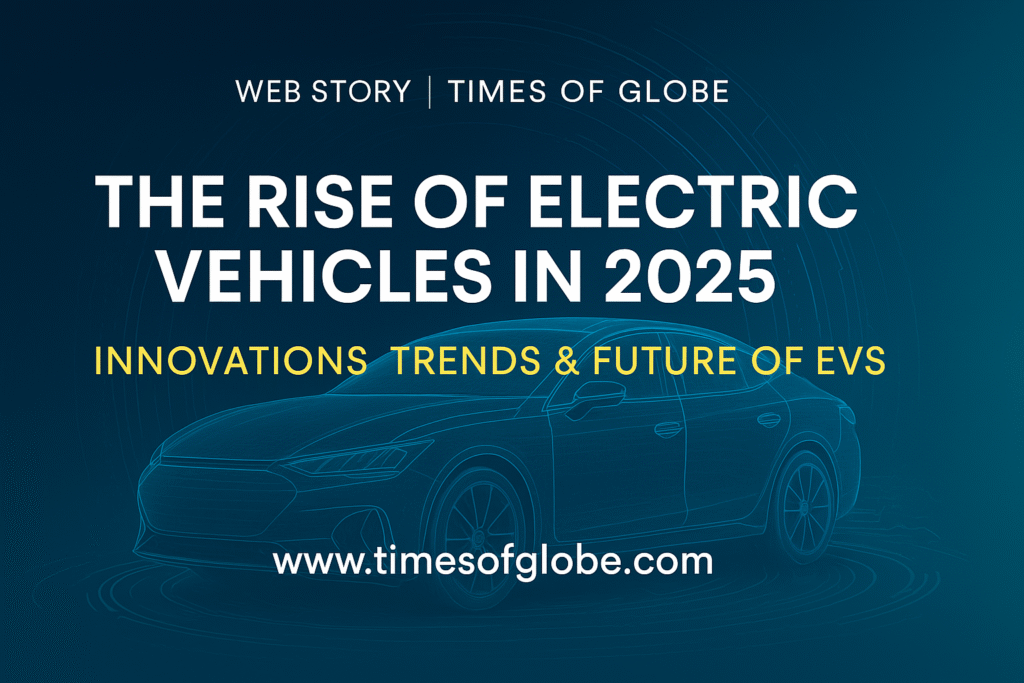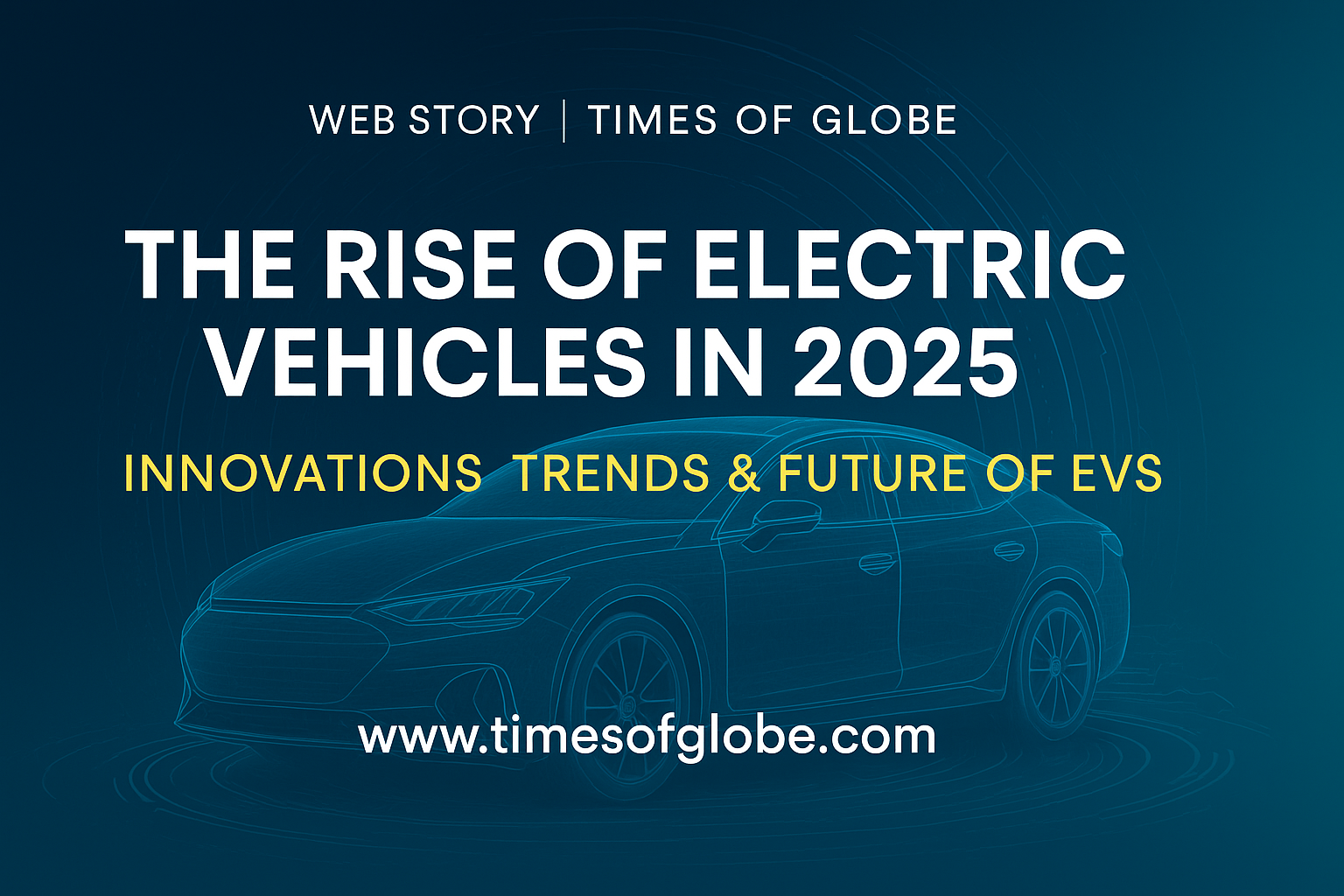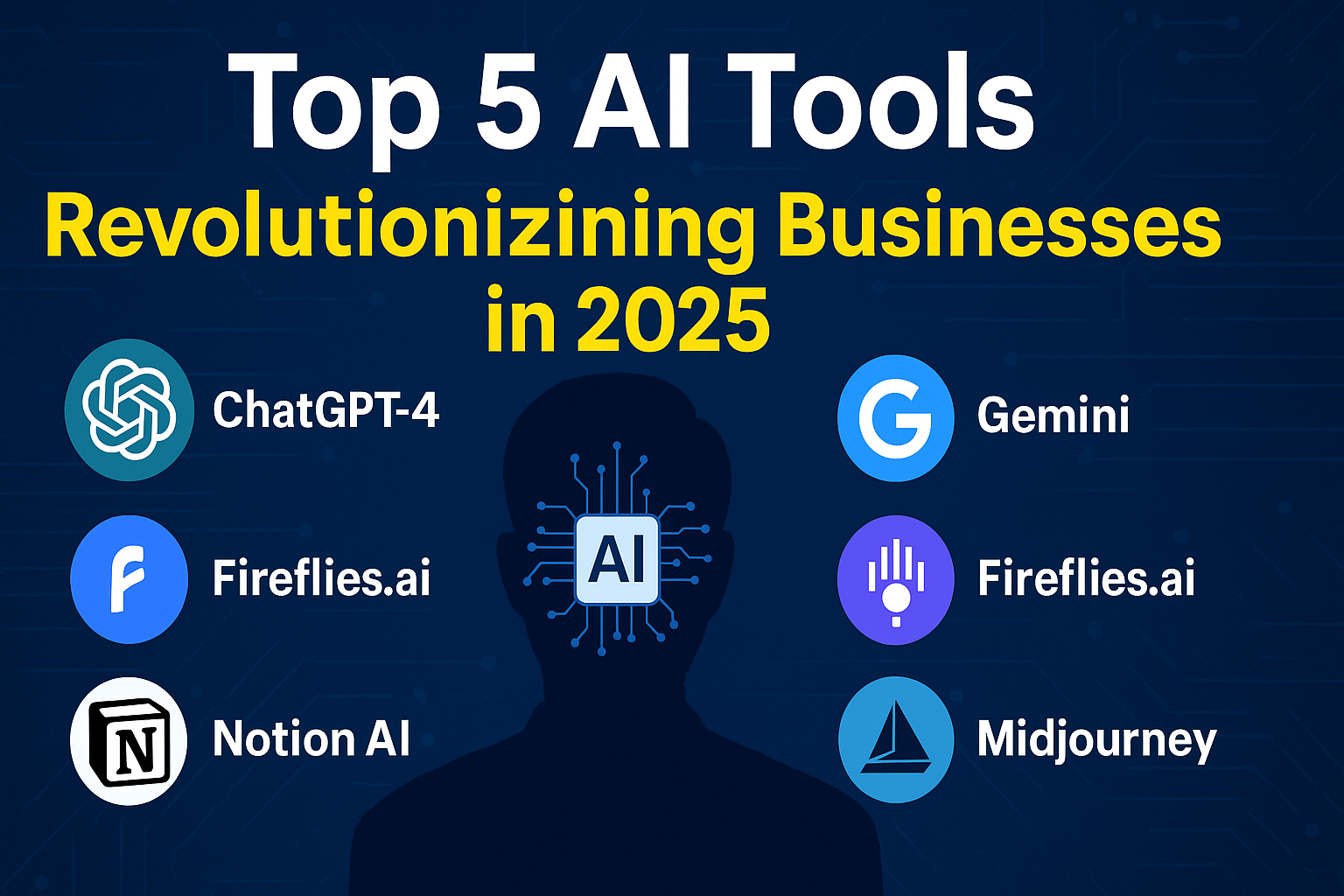
Introduction
Electric Vehicles (EVs) are no longer a futuristic concept; they are here, growing rapidly in adoption and transforming the automotive industry. As environmental concerns escalate and governments push for greener alternatives, EV technology has advanced significantly. In 2025, we’re witnessing a turning point for EVs — from battery breakthroughs to smart infrastructure and AI integration.
1. Evolution of Electric Vehicles
The journey of electric vehicles dates back over a century, but the past decade has seen exponential growth. Major automakers like Tesla, Rivian, Ford, Hyundai, and Tata have invested heavily in electrification. 2025 marks a maturity point where EVs compete directly with ICE (Internal Combustion Engine) vehicles in range, performance, and cost.
2. Game-Changing Innovations in EV Technology
- Solid-State Batteries: These batteries offer higher energy density, faster charging, and better safety compared to lithium-ion. Toyota and QuantumScape are leaders in this space.
- Wireless Charging: EVs can now be charged via inductive pads embedded in roads or parking lots, adding convenience and reducing infrastructure clutter.
- Vehicle-to-Grid (V2G): EVs are now being used as mobile energy storage units, capable of returning electricity to the grid during peak demand.
- AI-Powered Drive Systems: Intelligent software is now optimizing route planning, battery usage, and maintenance through predictive diagnostics.
- Ultra-Fast Charging Stations: Companies like Ionity and Tesla have introduced chargers that deliver 300+ kW, reducing charge time to less than 15 minutes.
3. EV Market Trends in 2025
- Increased Adoption in Asia & Europe: India, China, and Germany are showing the highest EV sales growth, driven by government subsidies and pollution control measures.
- Commercial EVs on the Rise: Delivery fleets and public buses are transitioning rapidly to electric.
- Affordable EV Models: New EVs under $20,000 are entering the market, making EVs accessible to middle-income families.
- SUV & Pickup Dominance: Consumers are preferring electric SUVs and pickups over compact cars due to range and utility improvements.
4. Infrastructure Developments Driving Growth
- Widespread Charging Network: Over 5 million public chargers globally, with integrated apps showing real-time availability.
- Green Energy Integration: EV charging stations are being powered by solar and wind energy, ensuring a cleaner lifecycle.
- Smart Parking & Charging: IoT-based parking solutions detect EVs, reserve slots, and even handle automatic payment.
5. Environmental and Economic Impact
- Emission Reduction: A 50% drop in urban CO2 levels has been reported in cities with high EV usage.
- Job Creation in EV Sector: Battery manufacturing, charger production, and EV maintenance services are booming industries.
- Savings for Consumers: EV owners report up to 70% reduction in fuel and maintenance costs over 5 years.
6. Challenges to Overcome
- Battery Recycling & Waste Management
- Limited Rural Infrastructure
- Higher Initial Purchase Price
- Concerns Over Grid Capacity During Mass Adoption
7. Future Outlook (2030 and Beyond)
By 2030, analysts predict 50% of global vehicle sales will be electric. Breakthroughs in battery materials, hydrogen fuel cells, and autonomous EVs will further shift the paradigm. Policy support, innovation, and consumer behavior will play pivotal roles.
Conclusion
Electric Vehicles in 2025 represent more than just cars — they’re a symbol of a cleaner, smarter future. With governments, industries, and consumers aligning towards sustainability, the EV revolution is set to reshape transportation forever.As we reach the midpoint of the decade, the year 2025 stands as a milestone in the global transition toward sustainable transportation. Electric vehicles (EVs), once seen as futuristic novelties, have now cemented their place in the mainstream automotive market. The convergence of technological innovation, supportive policy frameworks, growing consumer awareness, and environmental urgency has driven the rapid growth of EV adoption worldwide.
One of the most significant innovations powering this rise is battery technology. The shift toward solid-state batteries and improvements in lithium-ion chemistry have drastically enhanced energy density, reduced charging times, and extended the lifespan of EVs. These developments have played a pivotal role in reducing range anxiety—a critical barrier for many early adopters. Moreover, the growing availability of fast-charging infrastructure, coupled with smart grid integration and renewable energy support, is helping reshape urban mobility systems and reduce the dependency on fossil fuels.
Government policies and incentives continue to act as strong catalysts. In 2025, many countries have implemented stricter emissions regulations, offered tax benefits, and introduced subsidies for EV purchases and infrastructure development. These policy measures have not only encouraged automobile manufacturers to accelerate their EV production plans but have also incentivized consumers to make the switch. Furthermore, initiatives to electrify public transport fleets, government vehicles, and last-mile delivery services have pushed the market toward broader sustainability goals.
However, the road ahead is not without challenges. Infrastructure development, particularly in developing economies, remains uneven. Access to reliable charging stations, affordability of EVs, and the environmental impact of battery production and disposal are pressing issues that demand global collaboration. The supply chain for critical minerals such as lithium, cobalt, and nickel must be made more sustainable and ethically sourced to ensure the EV revolution does not come at the cost of ecological damage or human rights violations.
Moreover, automakers face the task of differentiating their EV offerings in an increasingly crowded market. Consumers expect not only eco-friendliness but also affordability, performance, and connectivity. Integrating artificial intelligence, autonomous driving features, and seamless digital interfaces will become essential for future competitiveness. Automotive software is rapidly becoming as important as hardware, opening new frontiers for innovation.
Looking ahead, the future of electric vehicles appears bright and full of potential. With more collaborations between technology firms and automakers, and the rise of EV-focused startups, we are likely to witness more agile, adaptable, and sustainable mobility solutions. The electrification of air and sea transport, vehicle-to-grid (V2G) integration, and circular battery economies represent the next frontiers of the green mobility movement.
In conclusion, 2025 is not merely a peak in EV development but a powerful indicator of where global mobility is headed. While significant work remains to be done in infrastructure, policy alignment, and environmental safeguards, the world has clearly embarked on an irreversible path toward electrified transportation. As innovation continues and challenges are systematically addressed, electric vehicles are poised not just to transform how we move—but how we live, work, and shape the future of our planet.
- Link to Tesla’s official innovations page
- Link to IEA Global EV Outlook 2025





One thought on “The Rise of Electric Vehicles in 2025: Innovations, Challenges & Future Outlook”